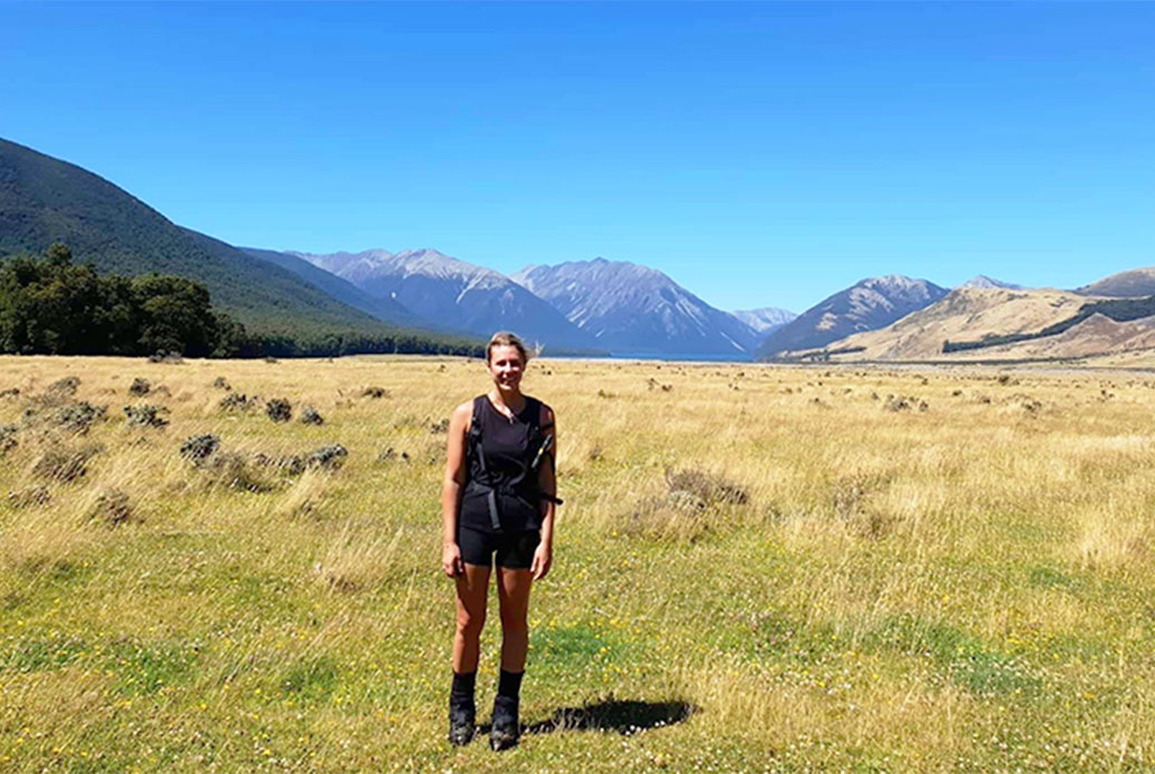Meet the Boffa Miskell biosecurity team: Sian Reynolds
27 July 2020
Sian Reynolds recently joined the Boffa Miskell Biosecurity team after six years with the Department of Conservation.

“I learned that predator control was integral in the survival of many of our native species during my time as a kiwi field ranger in Haast,” she says. “I’ve spent the last four years learning all aspects of animal pest control and how we can utilise these to make a positive difference for our native species.”
Sian grew up in Pukekohe within a large horticultural family, spending time outdoors and caring for animals and plants as well as joining her Dad on his hunting missions.
“I wanted to learn about the anatomy of the animals he dispatched,” Sian says. “I grew up thinking that I wanted to be a wildlife Veterinarian. However, when I began studying at Massey University I quickly realised that it was not the right pathway for where I wanted to be.”
Sian changed course and competed a Masters in Zoology with a key focus on disease in kiwi and other native passerines. Following the completion of her Masters, she moved to South Westland to work for DOC on the elusive Haast tokoeka kiwi.
In 2016, Sian was one of the winners of a competition to find the ‘toughest rangers’ and represented DOC at the premiere of ‘Hunt for the Wilderpeople’.
She was nominated by conservation dog Rein (with a little help from his handler, biodiversity ranger Iain Graham), for her efforts to retrieve a rowi — Apteryx rowi, the rarest of the five species of kiwi — from a particularly tight spot inside a hollowed out tree.
“The Haast tokoeka kiwi population is one of the most critical and, at the time I started, was suffering immensely from disease,” Sian says. “The fight for their survival was much bigger than just cuddling the birds — predator control was instrumental to their survival in the wild.”
Sian later took on a role managing all landscape-scale ground predator control in Abel Tasman National Park through a strategic partnership with Project Janszoon. She immersed herself in mustelid, rat, feral cat, deer and pig control and learnt all the ins and outs of trapping, poisoning, and monitoring these animals. She then moved down to DOC Rangiora, and worked in Arthurs Pass National Park and Lake Sumner Forest Park.
“I really feel like I’m making a difference with landscape-scale projects,” Sian says. “It’s not only ‘saving’ a single species; at such large scale, you are benefiting a multitude of native species. It is a very rewarding job and the relationships you build with stakeholders and landowners is an enjoyable part of the role.”
Sian says that the most critical biosecurity issue New Zealand is facing is the education of the public.
“Some of the biggest threats — wilding pines, for example — are in backcountry areas not visible to the public; so bringing them along on the journey is very hard. We need to do a lot more in this regard so that we do not lose our social licence to undertake biosecurity operations at such large scales.”
Even outside of working hours, you’ll still find Sian enjoying the wide-open spaces.
“I love being outdoors – whether it’s hiking, hunting, snowboarding, diving or fishing,” she says. “My partner is also an avid conservationist and along with our two dogs — Bean, a beagle; and Pickle, a Jack Russell — we love going on an adventure to new destinations and exploring the beautiful country that is our home!”

